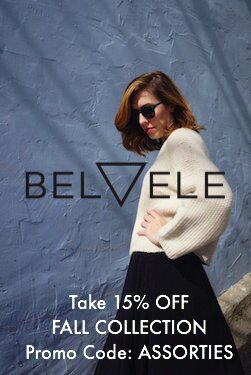FASHION ILLUSTRATION INSIGHTS: TRACY TURNBULL
Initially trained as a fashion designer, graduating from the Newcastle Polytechnic, Tracy Turnbull worked as a clothing designer for over a decade. But it was her keen interest for the illustration side of design that made her switch careers, and started teaching fashion illustration, fashion graphics and portfolio skills at Northumbria University as well as building a career as a freelance illustrator.
Since her early beginnings in the industry, her clientele has grown and today includes the likes of Nylon magazine, Benefit Cosmetics, L’Oreal Professional, Garnier, Harper Collins Books and WGSN, and Turnbull has been invited to exhibit her work in London and has been featured in many online publications.
Read on as she discusses her shift to illustration and the evolution of the industry within the years, and shares valuable advice about her craft.
What made you shift from clothing design to illustration?
I’ve always been interested in the illustration side of design; it was my favorite part of a project when I was studying. After working as a designer for 14 years, I changed career path and went into teaching part-time, where I found myself teaching illustration and portfolio skills. I think this rekindled my love of illustration, and decided to freelance on the illustration side, as well as teaching.
How did joining an agency come about? What aspects of your job would be different if you were by yourself?
I had tried to join an illustration agency on many occasions, but it was harder than I had anticipated. Agents are approached by hundreds of illustrators each week all wanting to be represented. I think the key to getting into an agency is to show that you can market yourself well and to look at agencies which don’t represent others with a similar style to you. I think my job would be a lot harder without my agent; they have a vast client network, and are fantastic at pairing up the right illustrator for the client jobs they receive. They act as a support as well as negotiating projects and chasing payment. They have opened doors for me that I wouldn’t have been able to open myself.
You have a wide range of clients both in the beauty and fashion industry. Do you believe varied experience or specialization in a particular field is the key to last within the industry?
I think that varied experience certainly helps longevity in the industry, I have specialized in fashion and beauty illustration which has worked well for me, especially since fashion illustration appears to have made a comeback in the last few years. You need to build a good reputation, and relationships with clients, but I also feel that you have to keep on bringing freshness and newness to your work to last in this industry, just like fashion.
How did you spread the word about your work in the beginning of your career? Do you think that your type of clientele uses social media to find potential partners?
Social media has been so important for me. I decided to create my own website and market myself across blogs, Instagram, Facebook etc. The most important one for me was Behance. I was approached by Nylon magazine to do a couple of editorial spreads as they’d seen my work on Behance. I’d heard that a lot of magazine editors used Behance to look for new talent. It all seemed to springboard from there. I was then approached by Benefit Cosmetics in San Francisco, who had noticed my work in Nylon, and after that I was approached by Illustration Ltd to be in their agency. I’d say I got my break because of Behance.
Compared to when you started your career, what are some techniques you have abandoned and some you have adopted?
Digital! When I started my career everything was hand-generated with paints, markers, gouache and colored pencils. I have abandoned traditional art materials now, although I still draw in the traditional way with pencils, but I scan and color using Photoshop. Photoshop for me is just like a huge paintbox. I use watercolour, gouache, oil, pencil, pastels and markers all on screen. I find that working this way is far quicker, which is very useful when you have very tight client deadlines!
What is the most important thing about your craft you always teach your students?
I don’t teach as often used to due to my freelance work, but, when I do, I mainly show my students digital techniques. I advise students to be experimental and try new things. There should be no rules when it comes to fashion illustration.
I think that most illustrators have not studied illustration but some other fashion-related degree. Do you think that today fashion illustration has developed academically so as to attract prospective students?
I think it has definitely become a career path. A lot of fashion illustrators have studied design. When you’ve been trained as a clothing designer, knowing how fabrics fall and garments lie tends to come naturally, and helps enormously when illustrating.
What does the future hold for fashion illustration, in your opinion?
It’s an exciting time for fashion illustration. It’s great to see so many different illustration styles out there. I think fashion illustration is here to stay!
What are you currently working on and what are your future plans?
At the moment, I’m working on a contract for a cosmetic brand for their point of sale and online advertising, which is very exciting. It should be revealed around March time. I’ve also just finished another round of trend illustrations for WGSN, who I love working with! For my future plans, I’m hoping to update my website when I get five minutes!
www.tracyturnbull.com
Images © Tracy Turnbull



3 Responses